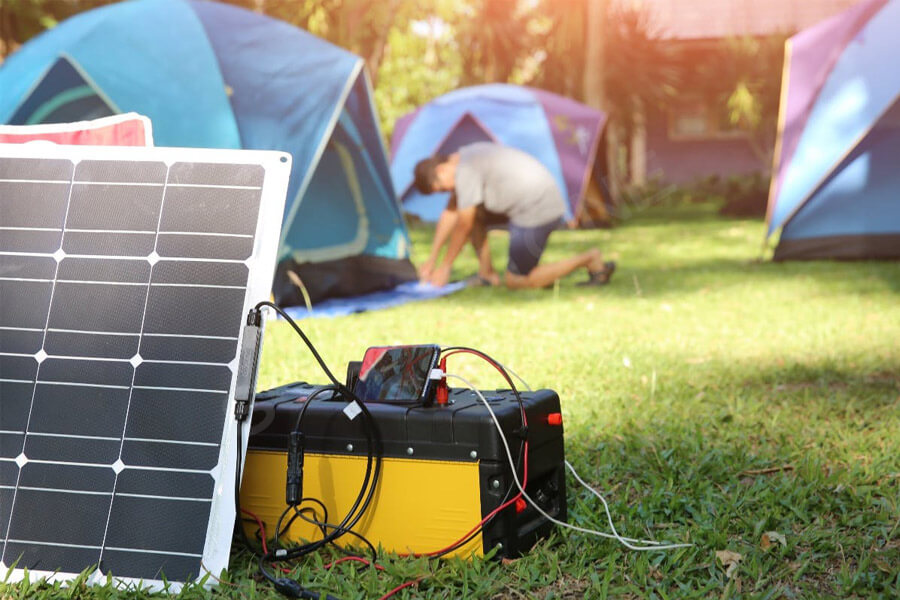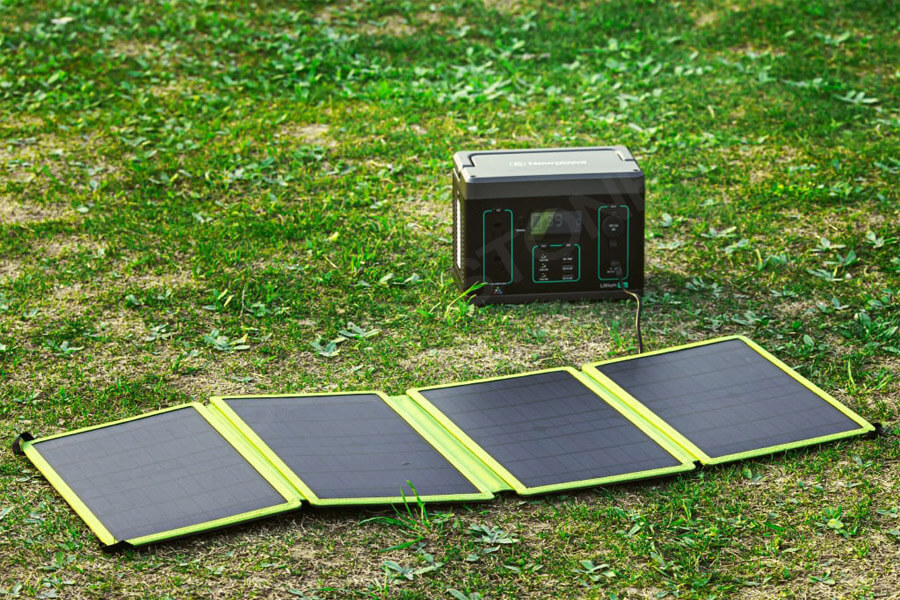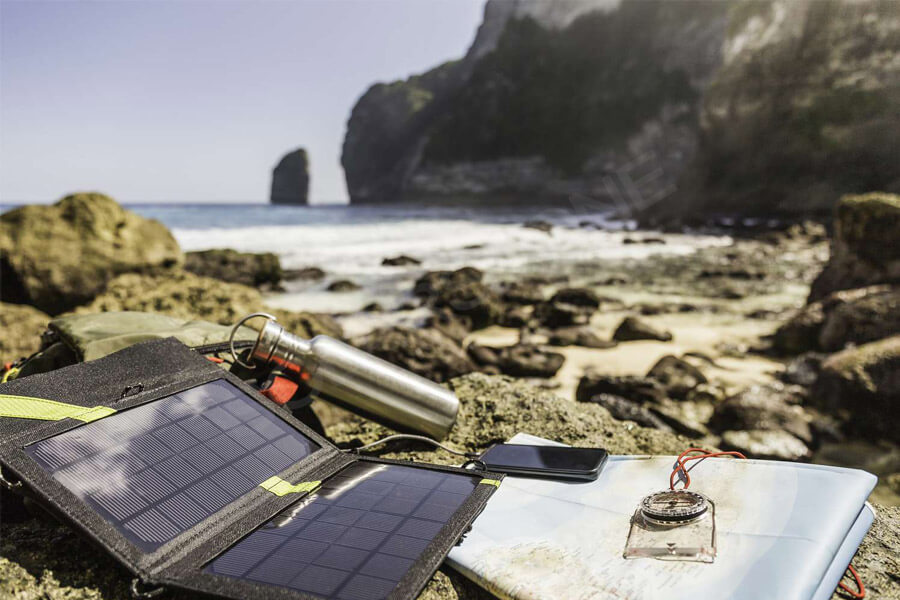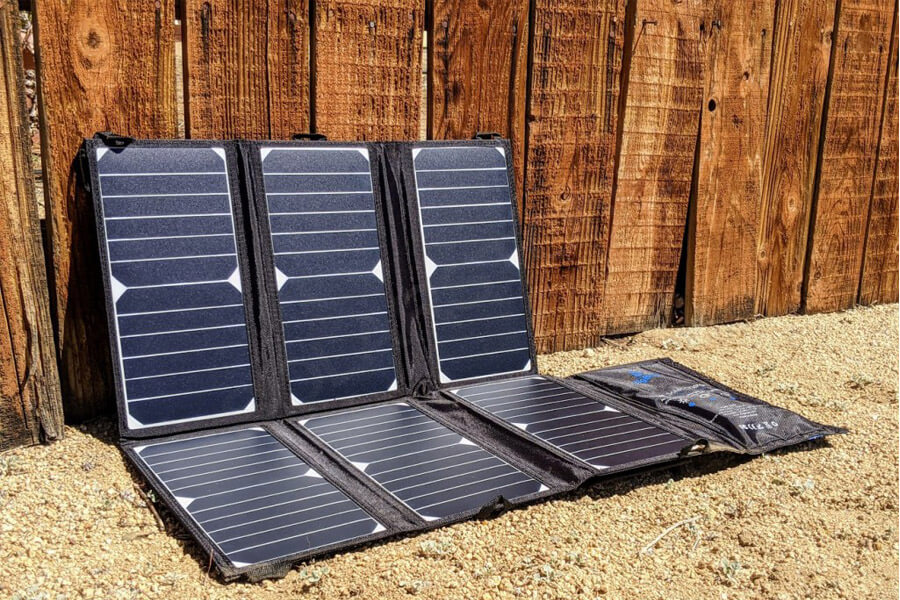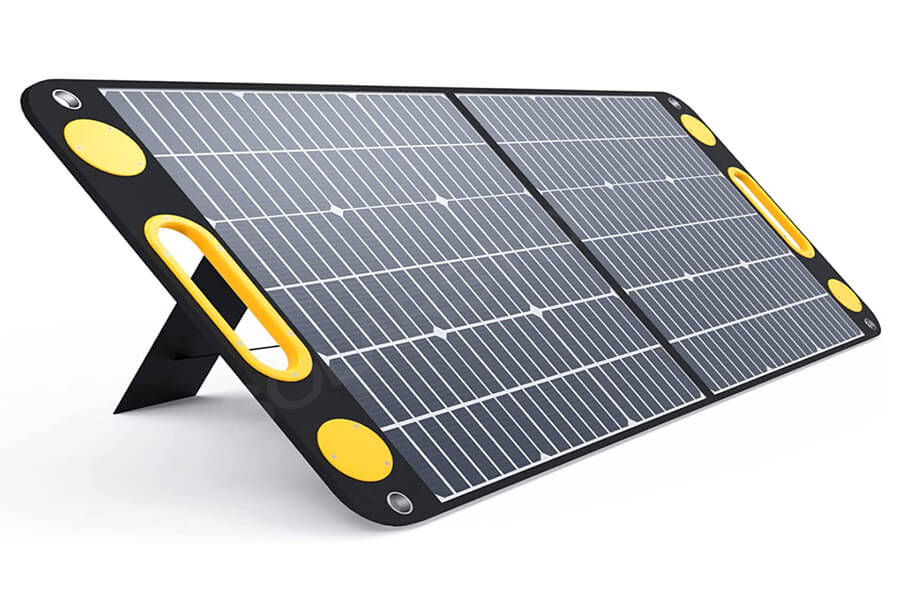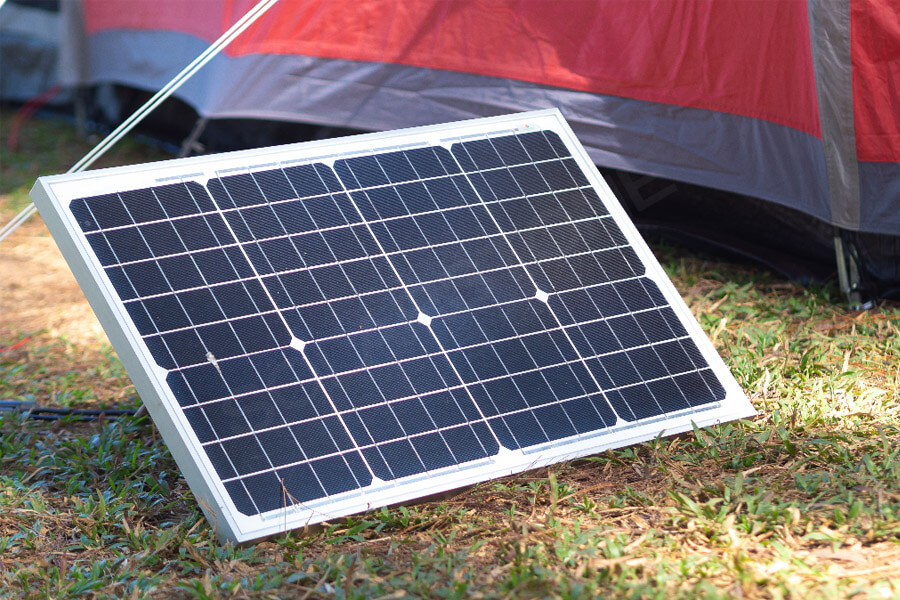With the price of solar cells plummeting, you can buy cheap portable solar panels online or in many large home improvement centers. Many foldable solar panels cost about $1.00 to $2.00 per watt – about half the cost of installing solar panels on the roof. But are they worth it? Let’s take a look.
Working principle of portable solar panel
Unlike solar panels that you may place on a roof, solar panels are placed in a fixed rigid frame and sealed under glass. Typical portable solar panels are usually wrapped in a protective sleeve made of mesh fabric or plastic. Small, inexpensive (less than $50) panels will produce 5 to 50 watts of power, while larger panels can produce 300 watts or more – the same as regular roof solar panels.
Smaller solar panels are usually single silicon solar cells, while larger solar panels may have two or three solar panels in the case of folding.
These solar panels have a simple jack or a set of jacks that can output power to various devices. You may find a DC output jack and a USB port that allow users to charge their mobile phones or laptops directly.
In most cases, portable solar panels are paired with portable lithium-ion batteries, so their energy can be used under any conditions. (However, you cannot charge the battery while in use.) The battery can have a wider range of output devices, from the standard home 120 volt AC power socket to the DC output jack.
Although the output of some larger solar panels can be equivalent to that of ordinary roof solar panels, portable solar panels do not mean to replace roof solar panels. By design, they lack the structural integrity and voltage regulation of correctly installed rooftop solar systems.
On the other hand, it only takes a few minutes to install portable solar panels, and you don’t need a permit or inspection, nor do you have to worry about damaging your roof.
All solar photovoltaic (PV) panels are made of crystalline silicon wafers that absorb sunlight. Light (photons) from the sun releases electrons from the silicon material and generates a current along the electrical conductor in the battery (hence called “photovoltaic”).
The current flows out of the battery in one direction (DC or DC) and directly flows into the equipment receiving DC power (such as battery), or indirectly generates alternating current (AC) for most households through the inverter.
Main uses of portable solar panels
Because these solar panels are portable, they are often used by campers, travelers, or anyone who needs electricity when they are not connected to the grid. But because they have many different sizes and costs, they also have many other uses.
1. Camping
Camping and hiking are probably the most common uses for portable solar panels. Instead of a portable generator, you can attach larger solar panels to the top of a van or RV. Unlike noisy and smelly generators that burn fossil fuels, batteries charged by solar panels are clean, quiet and tasteless. Because even large solar panels are portable, you can put them in the sun while your tent, camper or RV stays cool in the shade.
If you are going on a week-long hike in a remote area and want to charge your mobile phone for GPS or emergency, a small solar panel in your backpack can keep you in touch with the world. Larger solar panels can weigh 25 pounds or more, so they are better suited for car camping than hiking.
2. Rowing
Place the solar panel on the deck or other flat surface of the ship, and you can use the power stored in the battery to run the motor. When you are at sea, the panel can also act as a roof to protect you from the sun. When paired with solar cells, solar panels allow you to navigate without the noise and smell of wind or gas motors. As long as the sun shines, you can almost sail without stopping to refuel.
Special portable ocean solar panels can be used for solar rowing because they need to withstand corrosive salt water and worse weather conditions than campers may encounter.
Warning
If your solar panel is exposed to light, it will generate electricity, so to avoid electric shock, first use common sense. Do not immerse it in water, bend, puncture or destroy it, do not expose it to heat or flame, and do not disassemble it. If cleaning is required, use a slightly damp cloth that does not contain soap. Read the user manual for additional safety warnings.
3. Apartment life
If you live in an apartment and your landlord is unwilling to install solar panels on the roof, you can consider a community solar farm or install portable solar panels on the balcony to generate electricity by yourself. When moving out, you can take the solar panel with you.
4. Power failure
If you work at home and lose power, your modem and router will also go out, so if you cannot access the wifi hotspot, you will not be able to access the Internet. However, with a solar rechargeable battery backup, you can continue to run your modem, router, and laptop until power is restored. There are also portable solar panels, specifically designed as solar notebook computer chargers. Depending on the size of the battery, you can also run a small dormitory sized refrigerator to prevent food spoilage.
5. Thinking outside
You can keep outdoor structures such as greenhouses or hot tubs warm, light the courtyard or backyard recreation area, run water pumps on fountains or bird baths, or power outdoor holiday decorations without having to power them from home.
6. Reduce your carbon footprint
If you get electricity from a grid that is not 100% clean and renewable, you can reduce your carbon footprint by using solar panels to run something that needs electricity in your home. You can reduce your electricity bill and ensure that you use carbon free energy.


